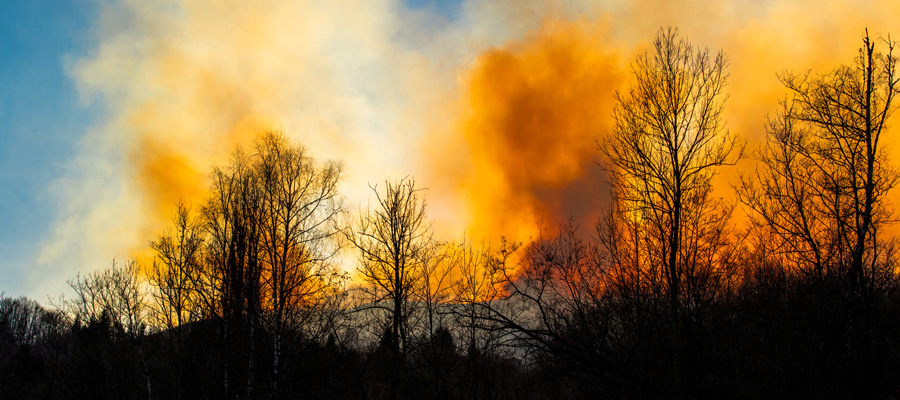That sinking feeling: BC’s forests and CO2 emissions
As everyone knows, BC has a lot of trees. From a climate change perspective the nice thing about trees (forests, really) is that they suck carbon dioxide out of the atmosphere. In the jargon, forests are a “sink”, reducing CO2 emissions, rather than a “source” that contributes them. At least, that used to be the case. Thanks to some new data released this summer by BC’s Ministry of the Environment, we can see that BC’s forests are now a source of CO2 rather than a sink. Net emissions from forests are not counted in the officially reported statistics, and up until now we only had data for Canada as a whole. We and others like the David Suzuki Foundation have been pestering the ministry to release the BC numbers, and finally this summer, they did (a small victory for transparency from this government).
Back in 1990, for example, forests in BC absorbed about half of the emissions that British Columbians put up into the atmosphere (total man-made emissions of 55.7 million tonnes of COs, with forests sequestering 27.7 Mt). The annual figures bounce around a bit due to harvesting of timber on forest lands and wildfires, both of which increase emissions, offset against the fact that reforested trees grow and as they do capture more CO2. The interplay between these two meant that the net amount of CO2 sequestered by forests between 1990 and 2001 ranged from a low of 20 Mt in 1992 to a high of 46.5 Mt in 1997. In 1997, this meant that BC forests essentially re-absorbed almost three-quarters of man-made CO2 emissions.
The bad news is that since 2003, BC forests have switched sides, and have turned into a source of CO2 emissions, and a pretty large one at that. In 2003, forests added about 37.6 Mt of CO2 to BC’s total emissions, an amount equivalent to half of BC’s total emissions. By 2007, the net addition was 52.5 Mt, equivalent to almost four-fifths of man-made emissions that year.
The main cause of the shift is the mountain pine beetle, and its rise to super-pest status due to winters that have not been cold enough to kill them off – an effect of climate change. Back in the early 1990s, pine beetle affected area averaged about 40,000 hectares. Then it took off starting in 1996, hitting 230,000 hectares by 2000, then 1.8 million hectares two years later, and in 2006 and 2007 about 7 million hectares affected. Killing trees and leaving dead wood standing means less sequestration of CO2, but also increases in wildfires, with surges in 2003 and 2004, that directly put CO2 into the air. 2009 will be another bad year for fires but we do not have any stats yet.
The case of BC forests is an example of a “positive” feedback loop that reinforces climate change itself: warmer temperatures lead to more CO2 being released from forests, which leads to more warming and so on. It is worth noting that more timber is being cut from the beetle-affected wood and this will lock away a certain amount of carbon in 2x4s and other wood products. Interestingly, the stats show that clearcuts were about 50% greater in total area by 2007 than in 1993, the year of the Clayoquat protests. And yet the area affected by the beetle is more than 30 times larger than what was clearcut.
Finally, added to this is net deforestation in BC – the conversion of forest lands to other uses such as agriculture, suburbs or oil and gas development (these are the top three reasons). Deforestation is offset by some modest afforestation (conversion in the other direction), but overall it contributes 3-4 Mt per year to BC’s total emissions. This is about the same as all commercial operations and institutions (businesses and the public sector but not heavy industry) contribute to BC’s annual emissions.
Add it all together and BC’s forests (and arguably our management of them) are big part of the climate change dilemma facing the province.
Topics: Climate change & energy policy, Environment, resources & sustainability


